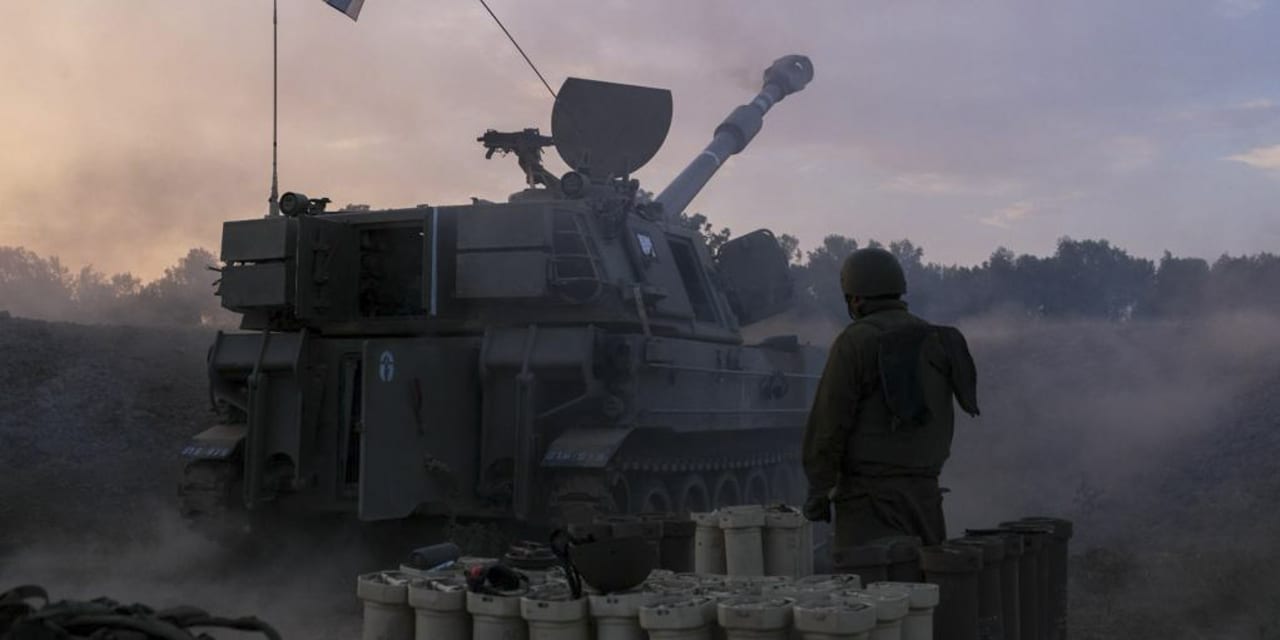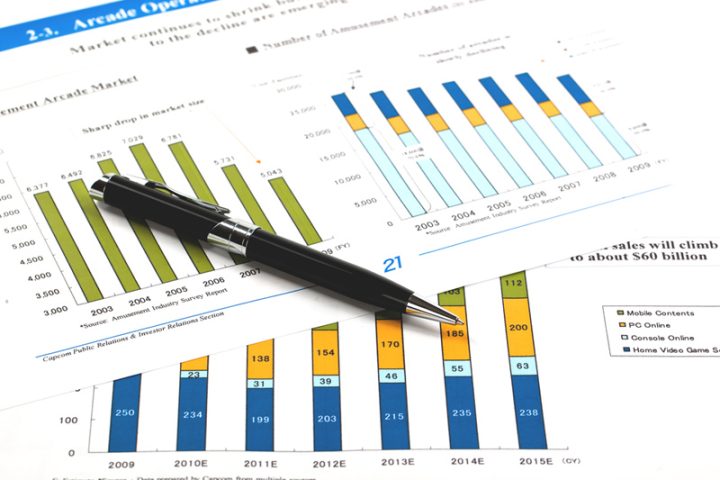Hamas’s barbaric massacre of at least 1,400 Israelis on October 7, and Israel’s subsequent military campaign in Gaza to eradicate the group, has introduced four geopolitical scenarios bearing on the global economy and markets. As is often the case with such shocks, optimism may prove misguided.
Scenario #1: The war remains mostly confined to Gaza, with no regional escalation beyond the small-scale skirmishes with Iranian proxies in countries neighboring Israel; indeed, most players now prefer to avoid a regional escalation. The Israel Defense Forces’ Gaza campaign significantly erodes Hamas, leaving a high civilian casualty toll, and the unstable geopolitical status quo survives.
Having lost all support, Israeli Prime Minister Benjamin Netanyahu leaves office, but Israeli public sentiment remains hardened against accepting a two-state solution. Accordingly, the Palestinian issue festers, normalization of diplomatic relations with Saudi Arabia is frozen, Iran remains a destabilizing force in the region, and the United States continues to worry about the next flare-up.
The economic and market implications of this scenario are mild. The current modest rise in oil prices would recede, because there will have been no shock to regional production and exports from the Gulf. Though the U.S. could try to interdict Iranian oil exports to punish it for its destabilizing role in the region, it is unlikely to pursue such an escalatory measure. Iran’s economy would continue to stagnate under existing sanctions, deepening its dependence on close ties with China and Russia.
Meanwhile, Israel would suffer a serious but manageable recession, and Europe would experience some negative effects as modestly higher oil prices and war-driven uncertainties cut into business and household confidence. By reducing output, spending, and employment, this scenario could tip currently stagnant European economies into mild recessions.
Scenario #2: The war in Gaza is followed by regional normalization and peace. The Israeli campaign against Hamas succeeds without producing too many more civilian casualties, and more moderate forces, such as the Palestinian Authority or an Arab multinational coalition, take over administration of the enclave. Netanyahu resigns (having lost the support of just about everyone), and a new moderate center-right or center-left government focuses on resolving the Palestinian issue and pursuing normalization with Saudi Arabia.
Unlike Netanyahu, this new Israeli government would not be openly committed to regime change in Iran. It could secure the Islamic Republic’s tacit acceptance of Israeli-Saudi normalization in exchange for new talks toward a nuclear deal that includes sanctions relief. That would allow Iran to focus on urgently needed domestic economic reforms. Obviously, this scenario would have highly positive economic implications, both in the region and globally.
Scenario #3: The situation escalates into a regional conflict that also includes Hezbollah in Lebanon and possibly Iran. This could happen in several ways. Iran, fearing the consequences of Hamas being eliminated, unleashes Hezbollah against Israel to distract it from the operation in Gaza. Or Israel decides to address that risk by launching a larger preemptive strike on Hezbollah. Then there are all the other Iranian proxies in Syria, Iraq, and Yemen. Each is eager to provoke Israel and U.S. forces in the region as part of its own destabilizing agenda.
If Israel and Hezbollah do end up in a full-scale war, Israel would also probably launch strikes against Iranian nuclear and other facilities, likely with U.S. logistic support. After all, Iran, which has devoted massive resources to arming and training both Hamas and Hezbollah, would likely use the broader regional turmoil to make the final leap across the nuclear-weapons threshold.
If Israel, and possibly the U.S., bomb Iran, production and exports of energy from the Gulf would be set back, possibly for months. This would trigger a 1970s-style oil shock, followed by global stagflation (rising inflation and lower growth), crashing stock markets, volatility in bond yields and a rush into safe-haven assets like gold
GC00,
The economic fallout would be more severe in China and Europe than in the U.S., which is now a net exporter of energy and could tax domestic energy producers’ windfall profits to pay for subsidies to limit the negative impact on consumers (households and non-energy firms).
In this scenario the Iranian regime remains in power, because many Iranians, even regime opponents, rally behind it in the face of an Israeli/U.S. attack. All parties in the region become more radicalized and confrontational, making peace or diplomatic normalization a pipe dream. This scenario may even doom Biden’s presidency and his re-election chances.
Scenario #4: The conflict spreads across the region but there is regime change in Iran. If Israel and the U.S. do end up attacking Iran, they will target not only nuclear facilities but also military and dual-use infrastructure, as well as regime leaders. Rather than supporting the regime, Iranians, who have been protesting morality-police abuses for over a year, may rally behind moderates like former President Hassan Rouhani.
The toppling of the Islamic Republic would allow Iran to rejoin the international community. There would still be a severe global stagflationary recession, but the stage would be set for greater stability and stronger growth in the Middle East.
“ There is a relatively high chance — 65% — of the conflict not escalating regionwide, implying that the economic fallout would be mild or contained. ”
How likely is each scenario? I would assign a probability of 50% to the preservation of the status quo; 15% to a post-war outbreak of peace, stability and progress; 30% to a regional conflagration, and 5% to a regional conflagration with a happy outcome.
The good news, then, is that there is a relatively high chance — 65% — of the conflict not escalating regionwide, implying that the economic fallout would be mild or contained. The bad news is that markets are currently assigning only at best a 5% probability to a regional conflict that would have severe stagflationary effects around the world, when a more reasonable figure is 35%.
Such complacency is dangerous, especially considering that the combined probability of a globally disruptive scenario (one, three, and four) is still 85%. The most likely scenario might have only mild short-term consequences for markets and the global economy, but it implies that an unstable status quo will remain in place, eventually leading to new conflicts.
For now, markets are priced for near-perfection and favor the mildest scenarios. But markets have often mispriced major geopolitical shocks. We should not be surprised if it happens again.
Nouriel Roubini is professor emeritus of Economics at New York University’s Stern School of Business and chief economist and co-founder of Atlas Capital Team. He is the author of Megathreats: Ten Dangerous Trends That Imperil Our Future, and How to Survive Them (Little, Brown and Company, 2022).
This commentary was published with the permission of Project Syndicate — The Economic Consequences of the Gaza War.
More: Israel-Hamas war threatens tech sector growth and innovation
Also read: Financial markets worldwide now face a higher chance of extreme events, El-Erian warns
Read the full article here






